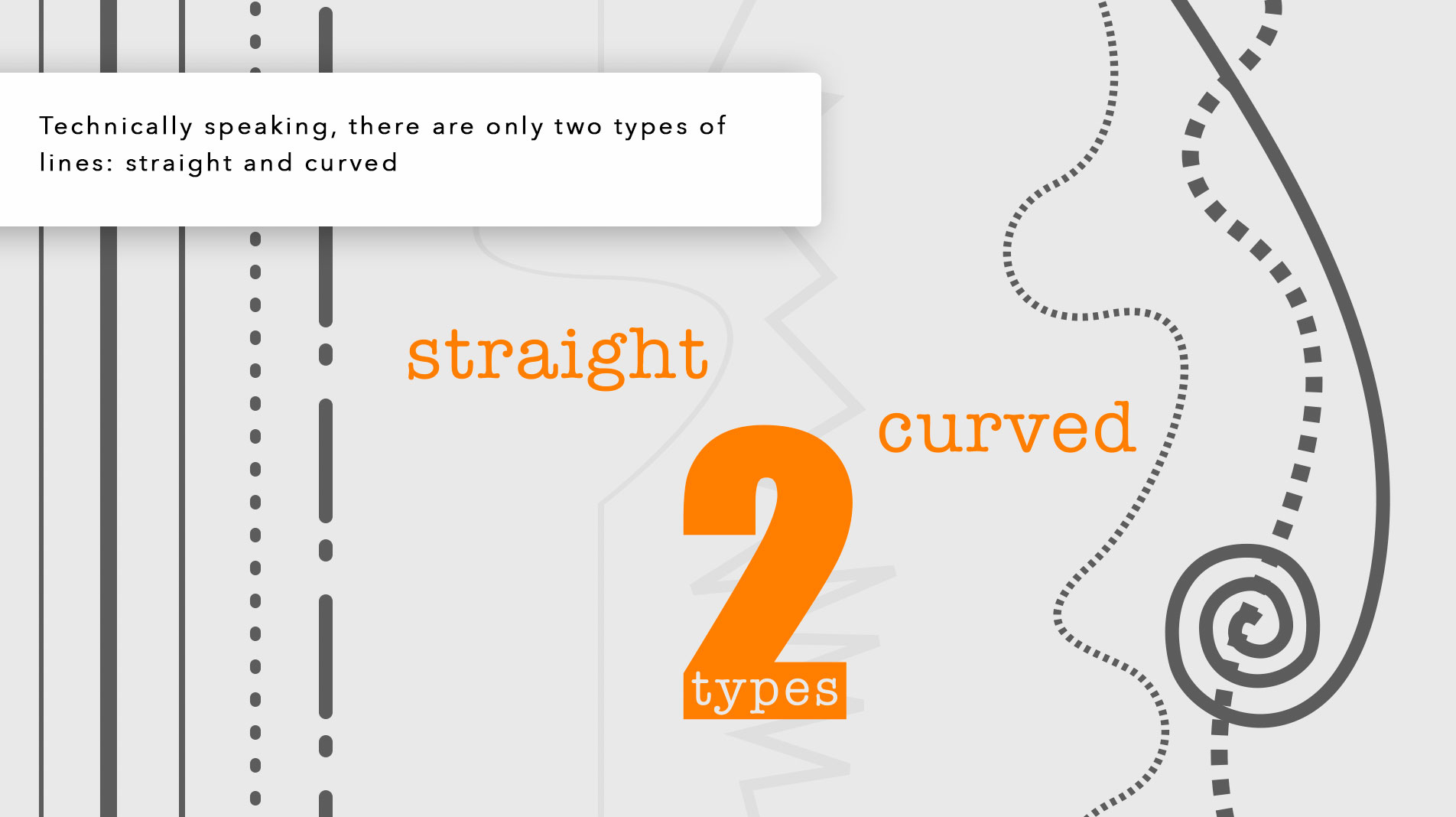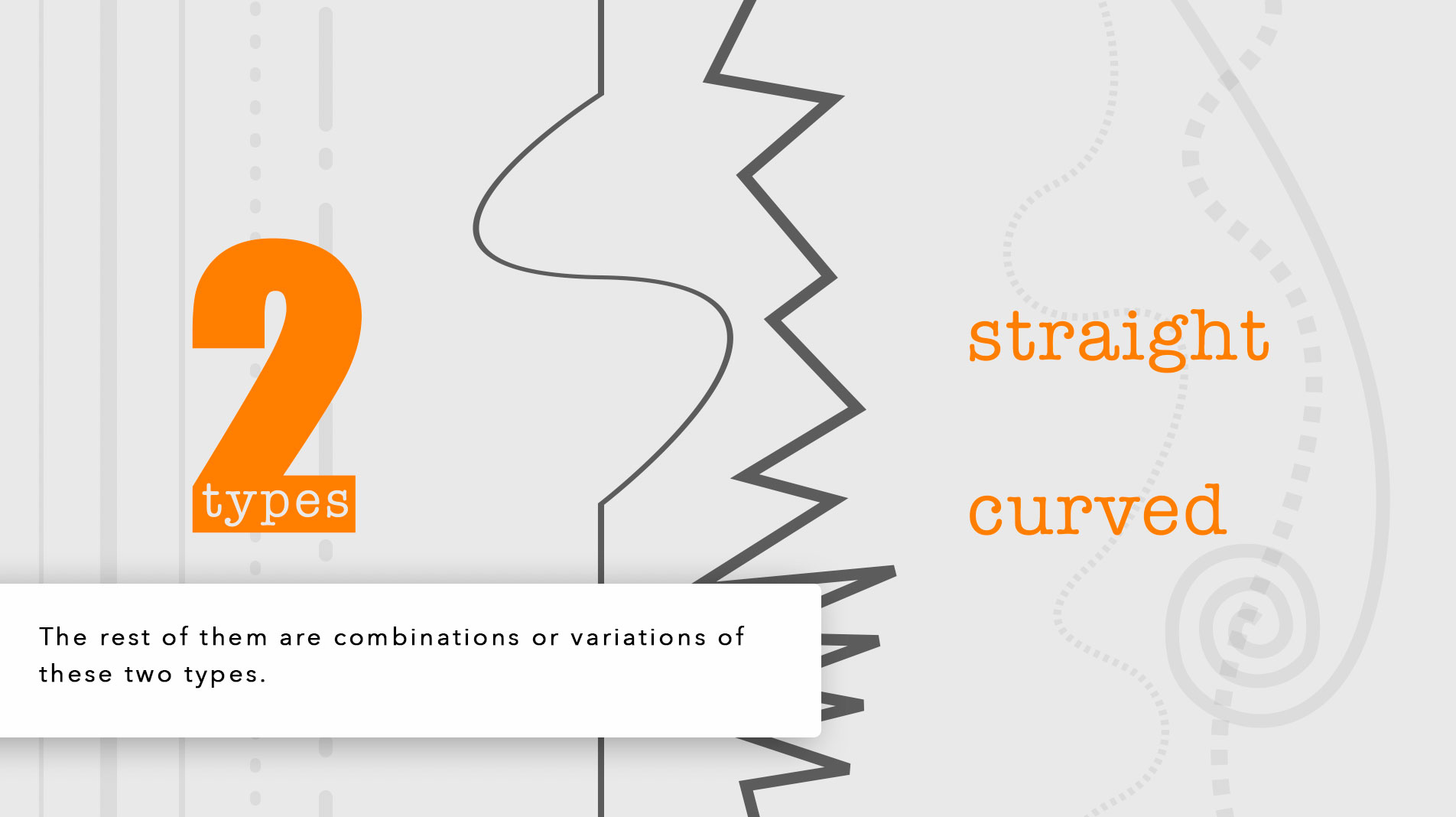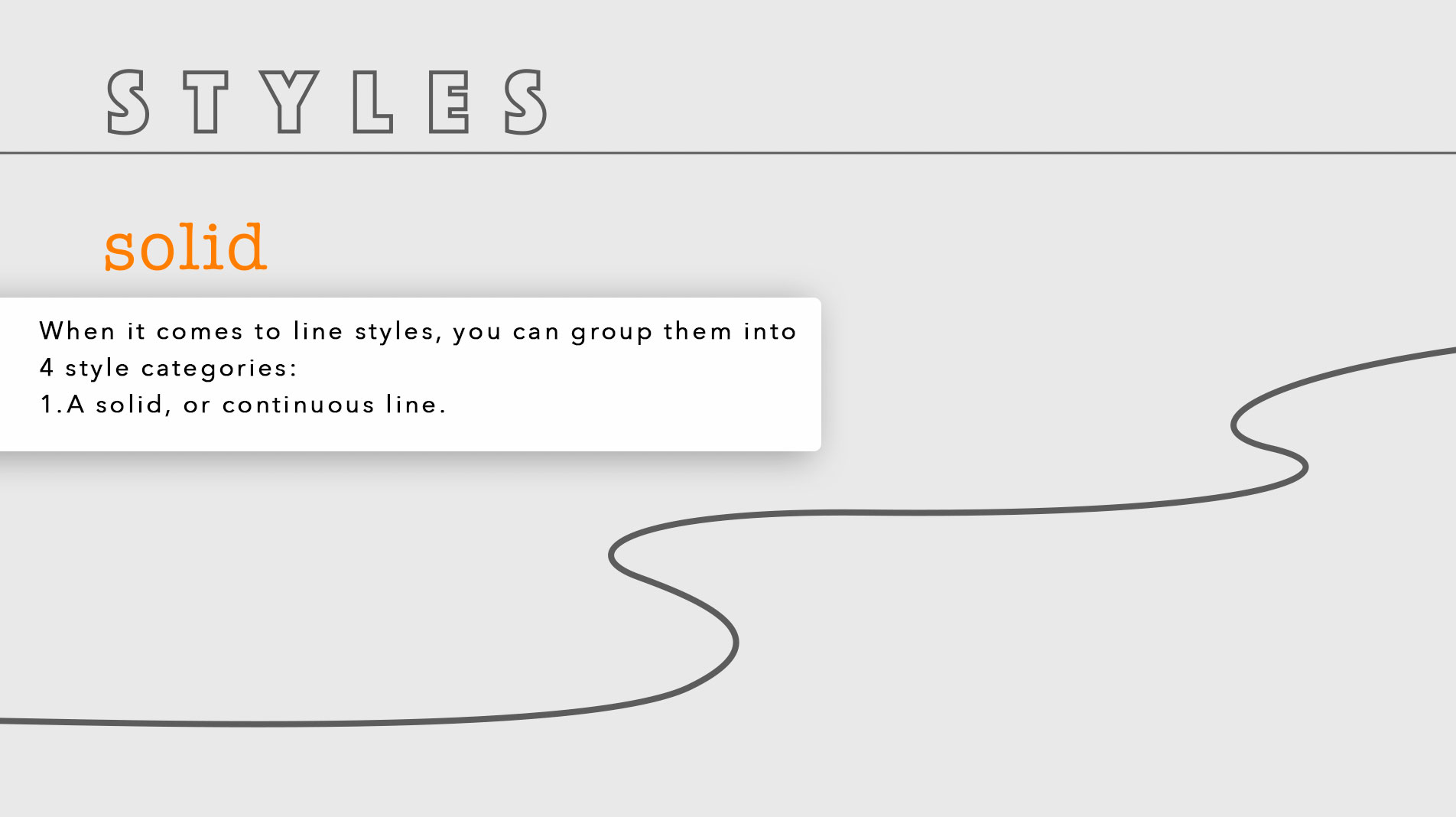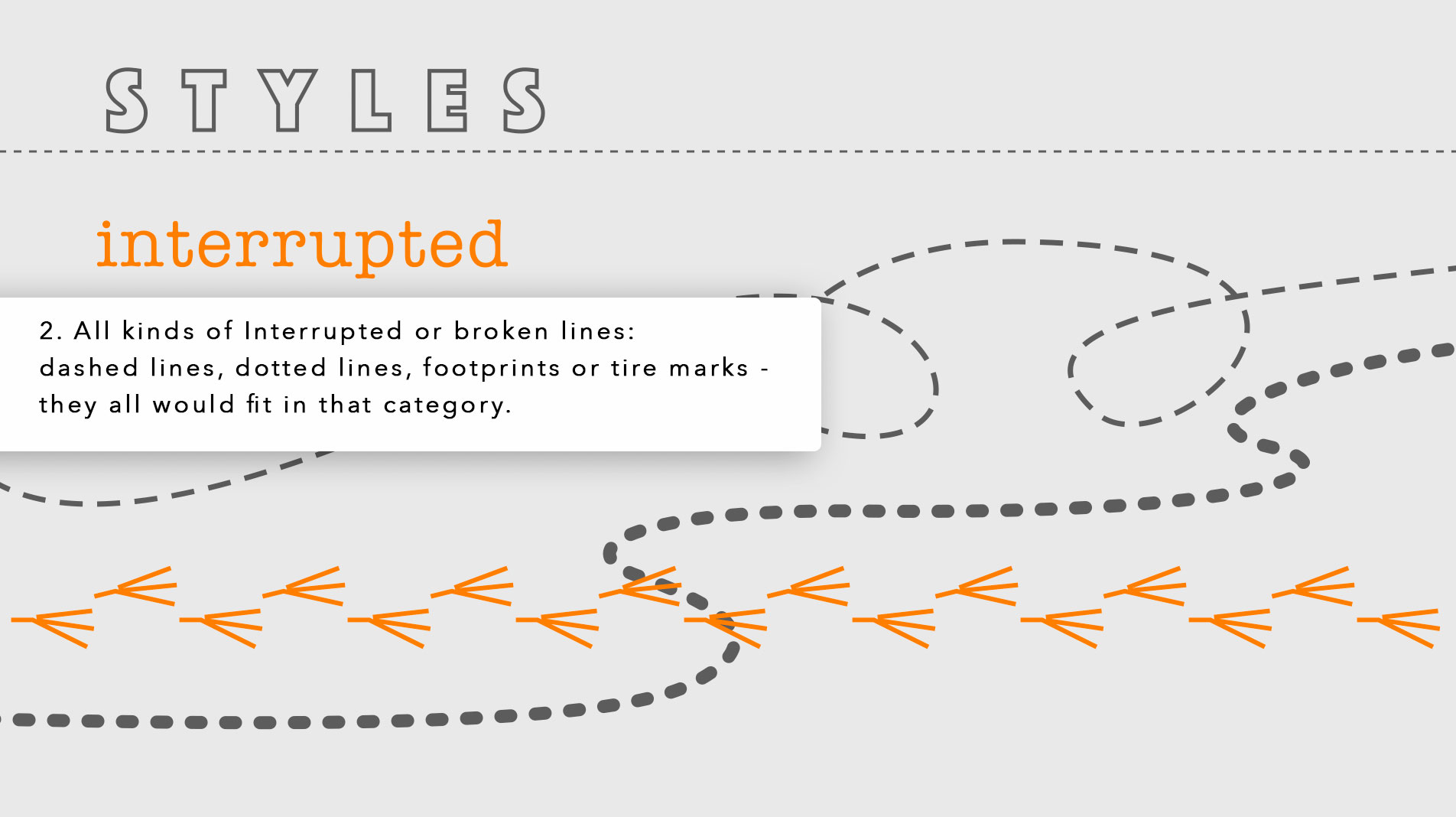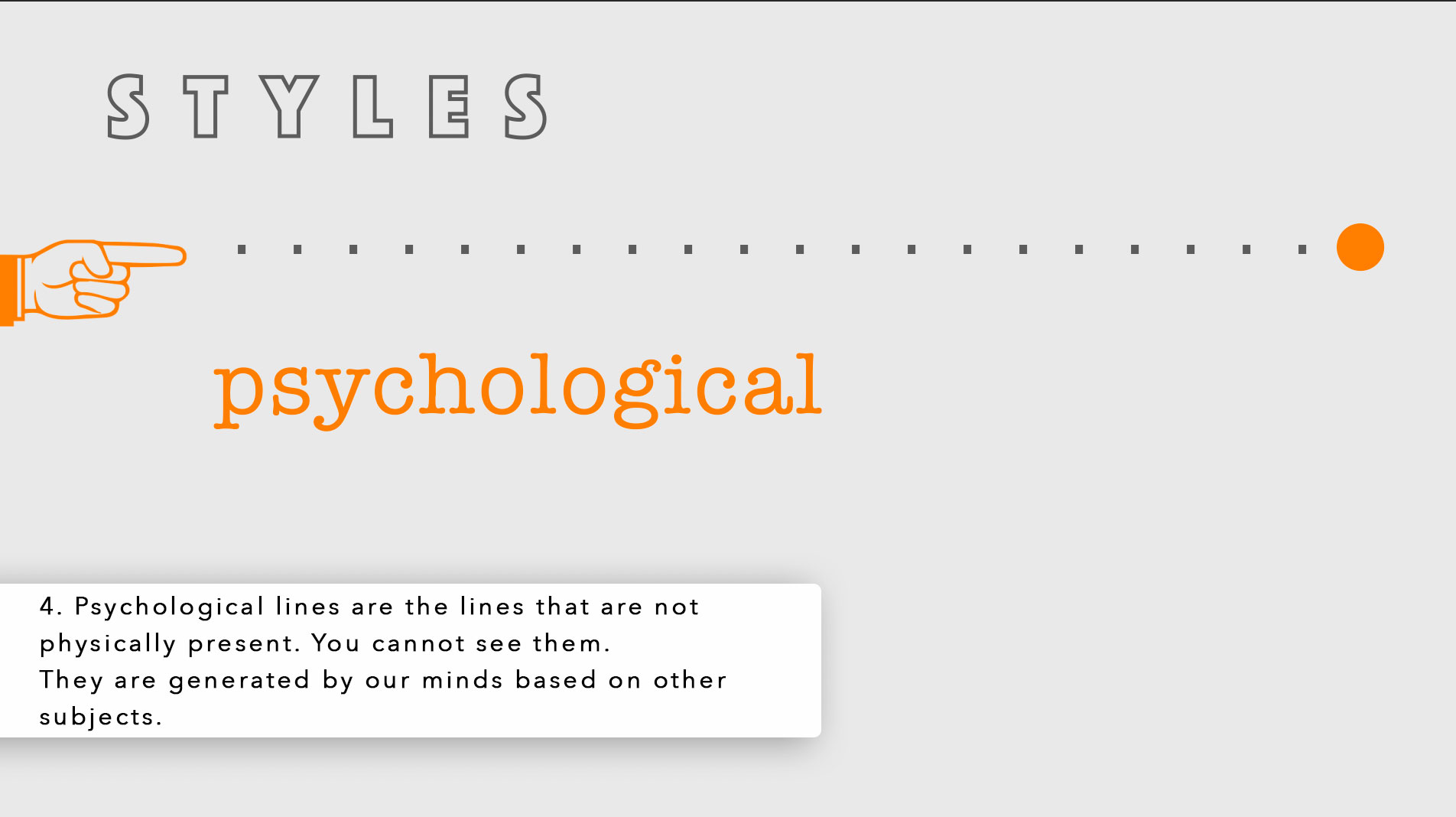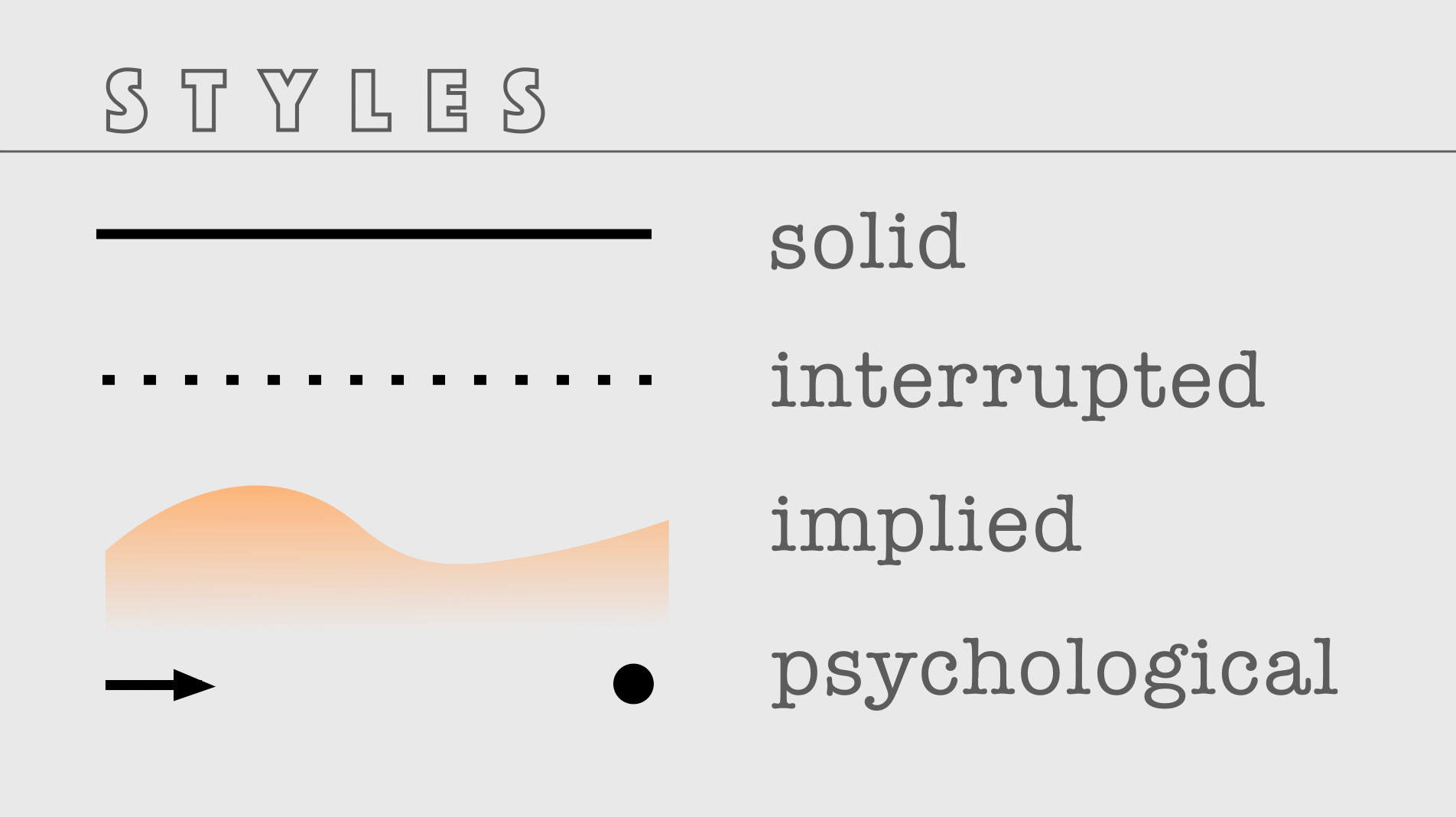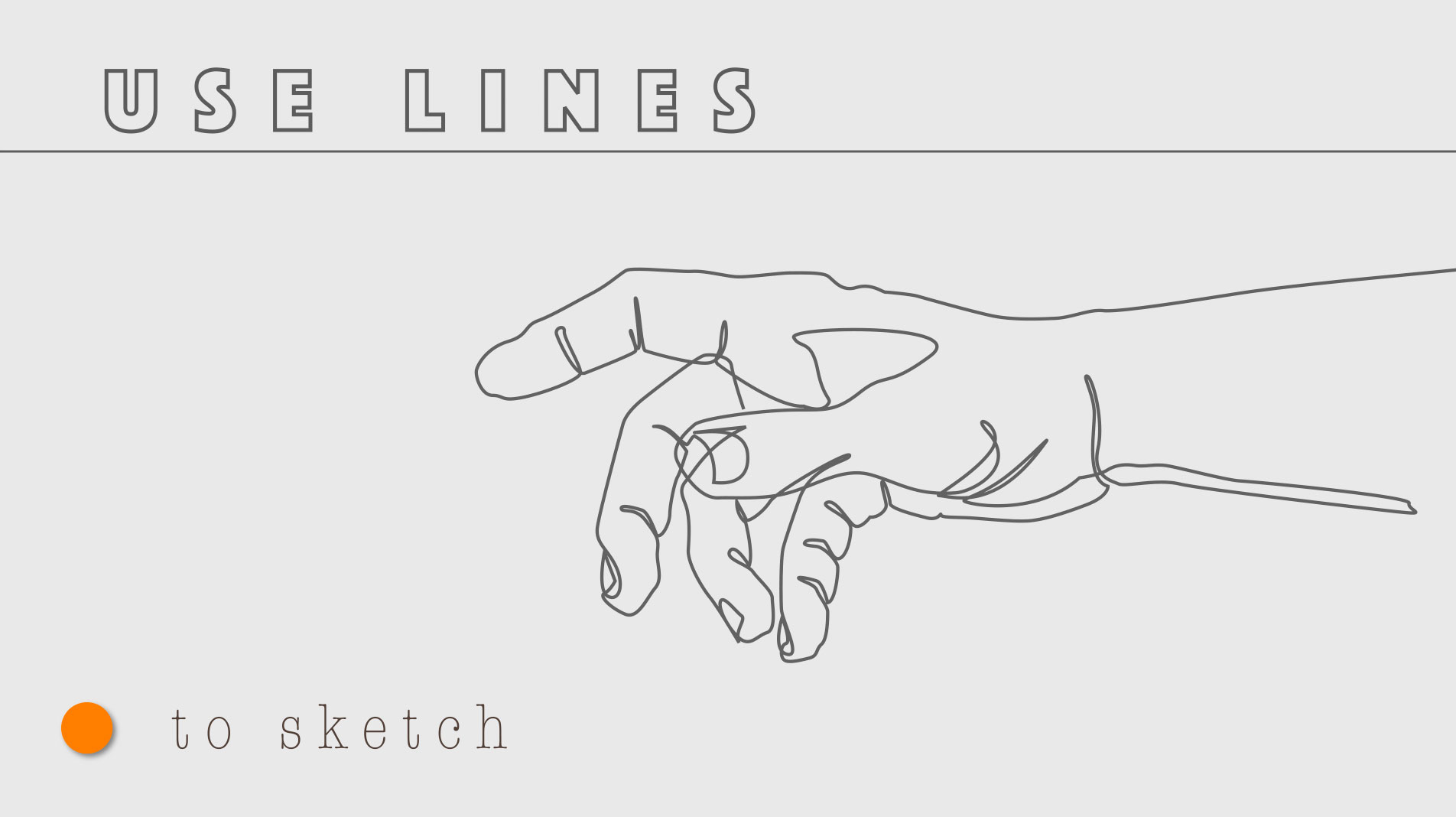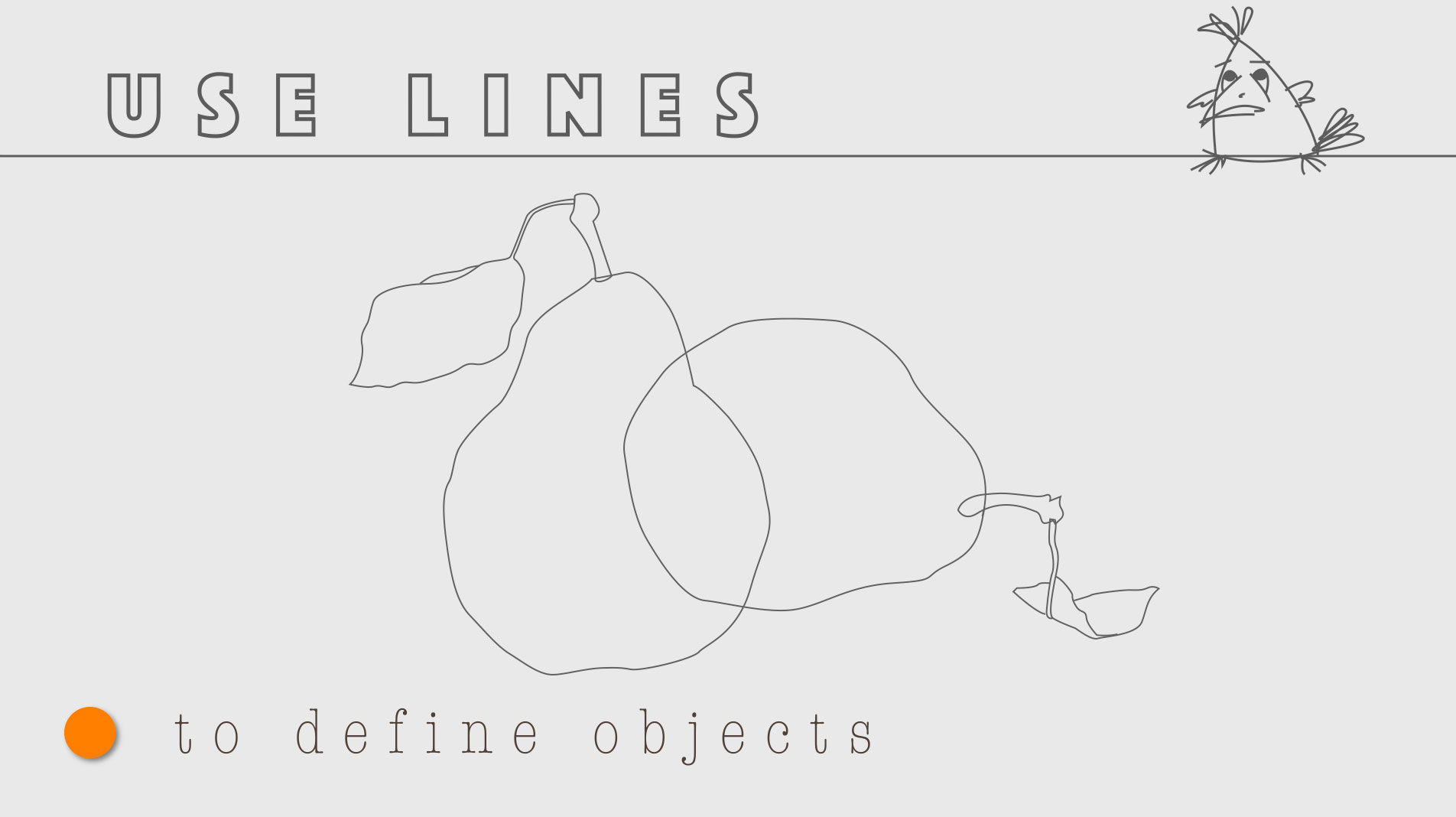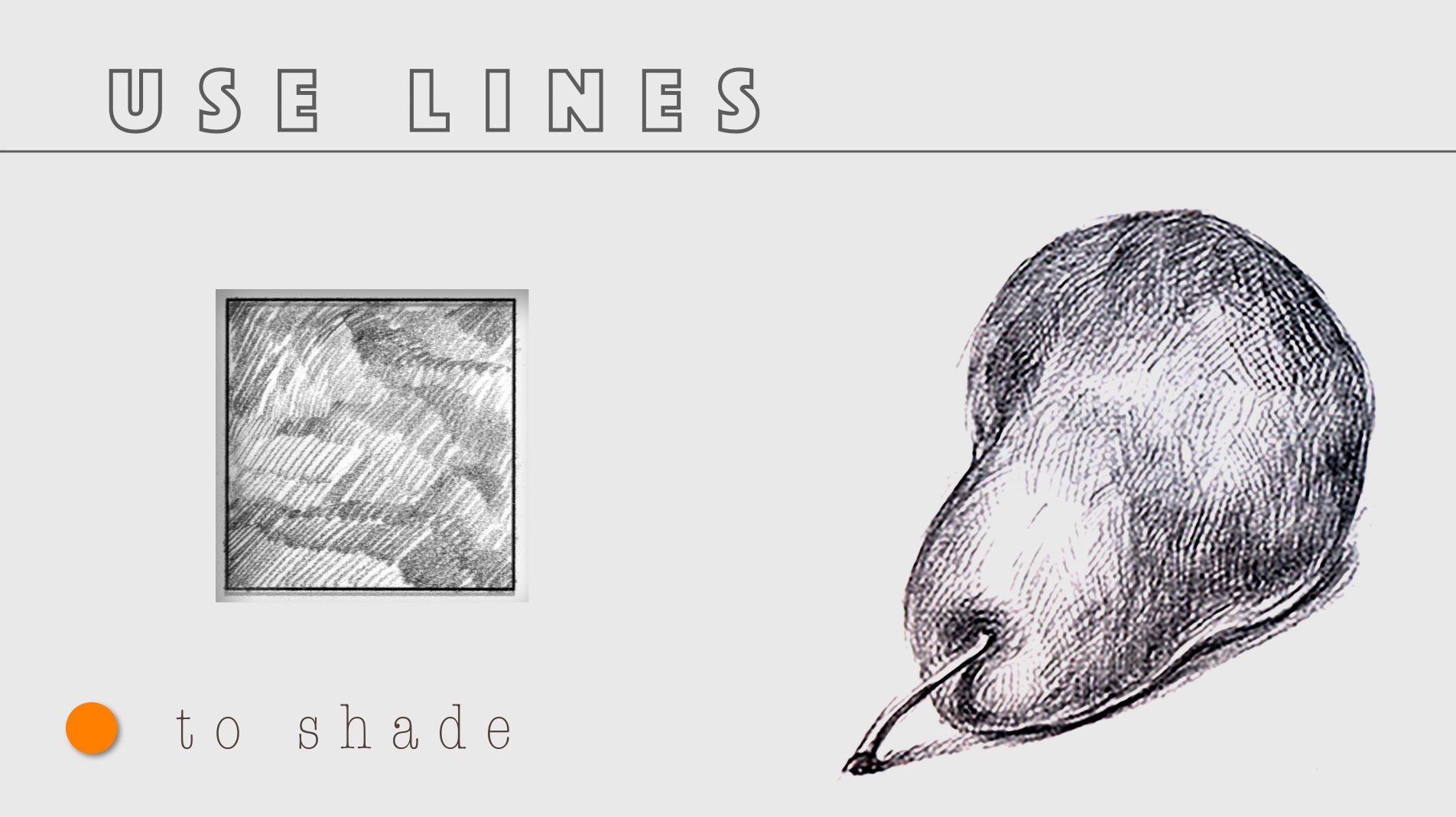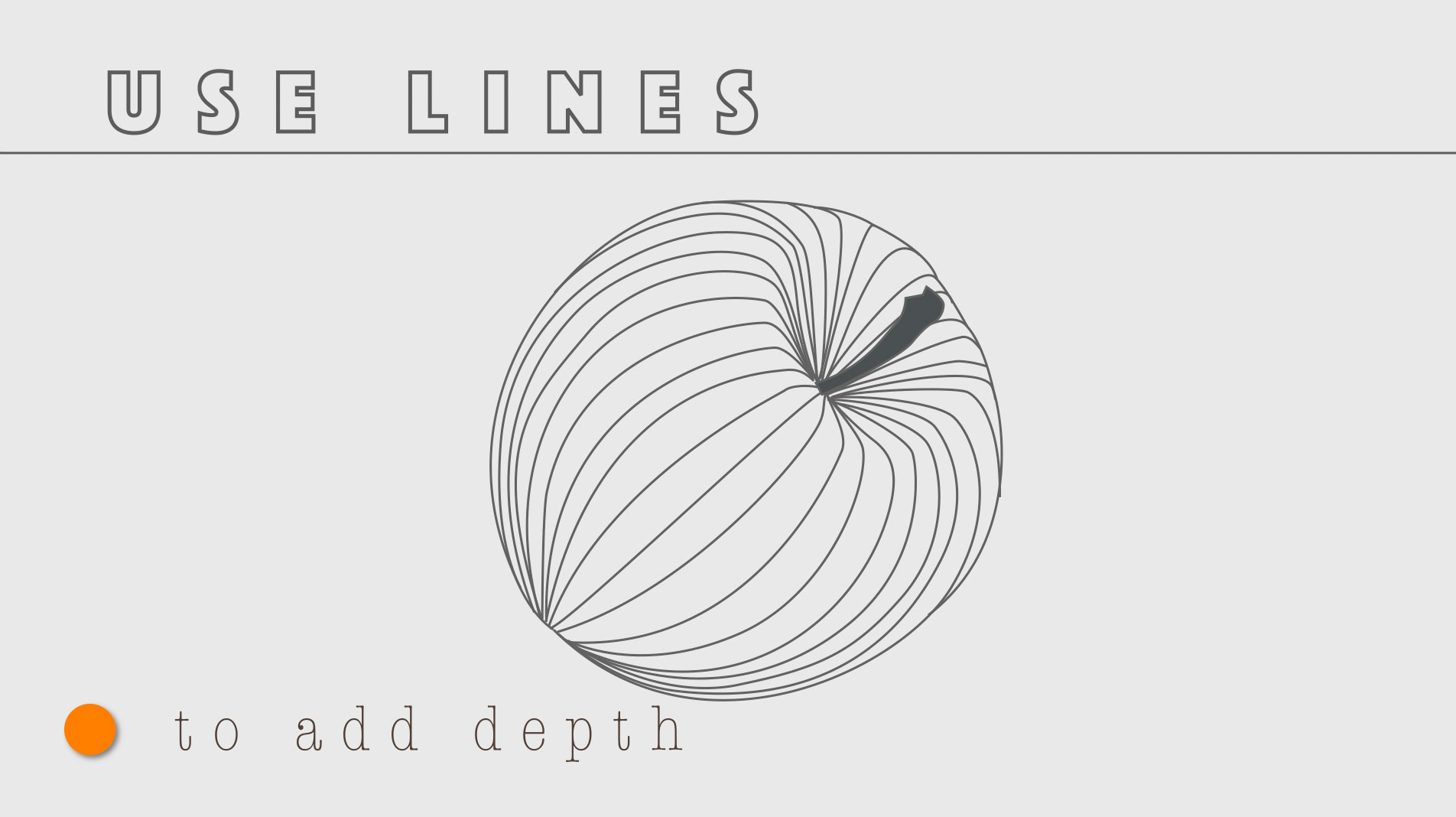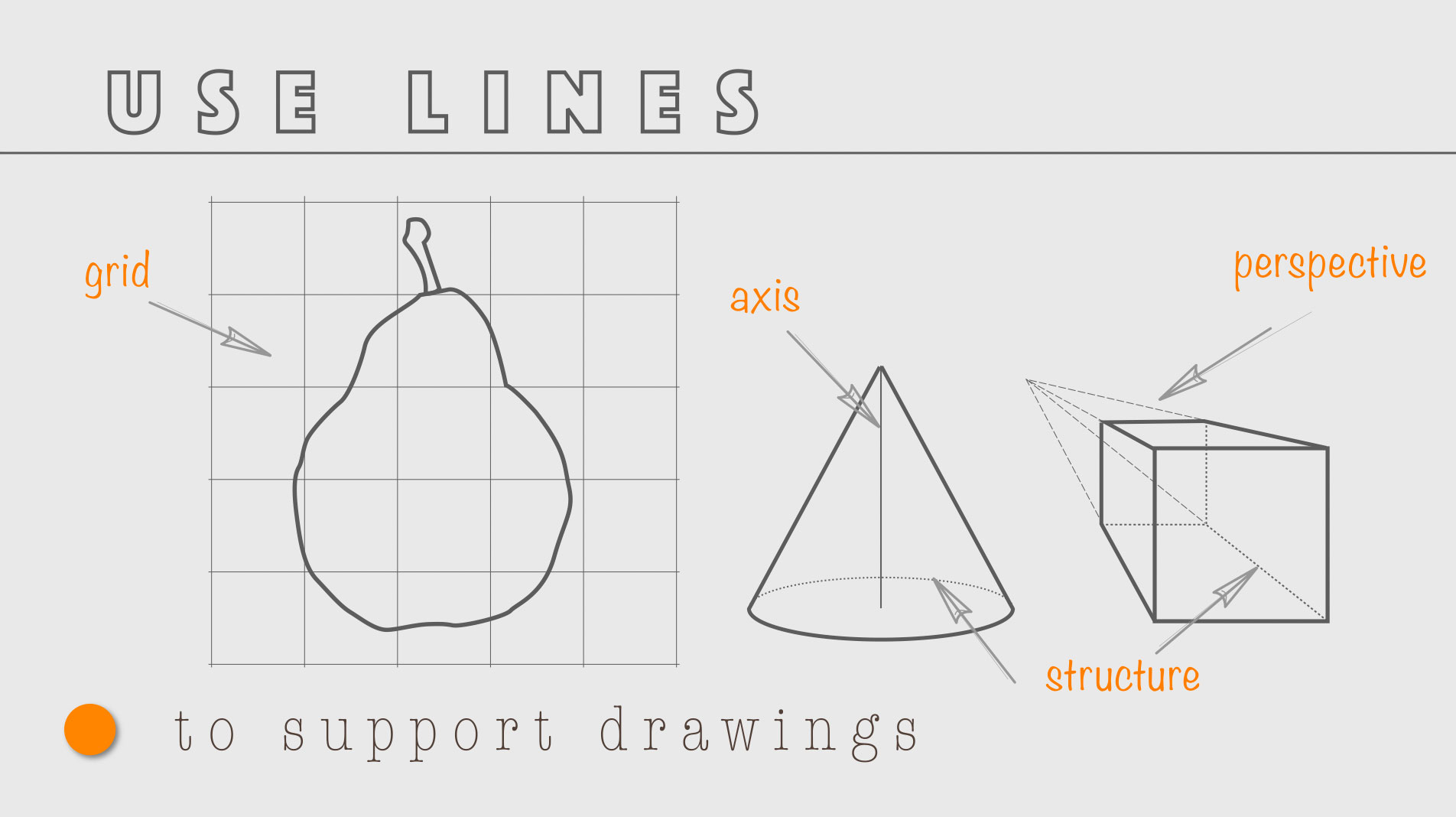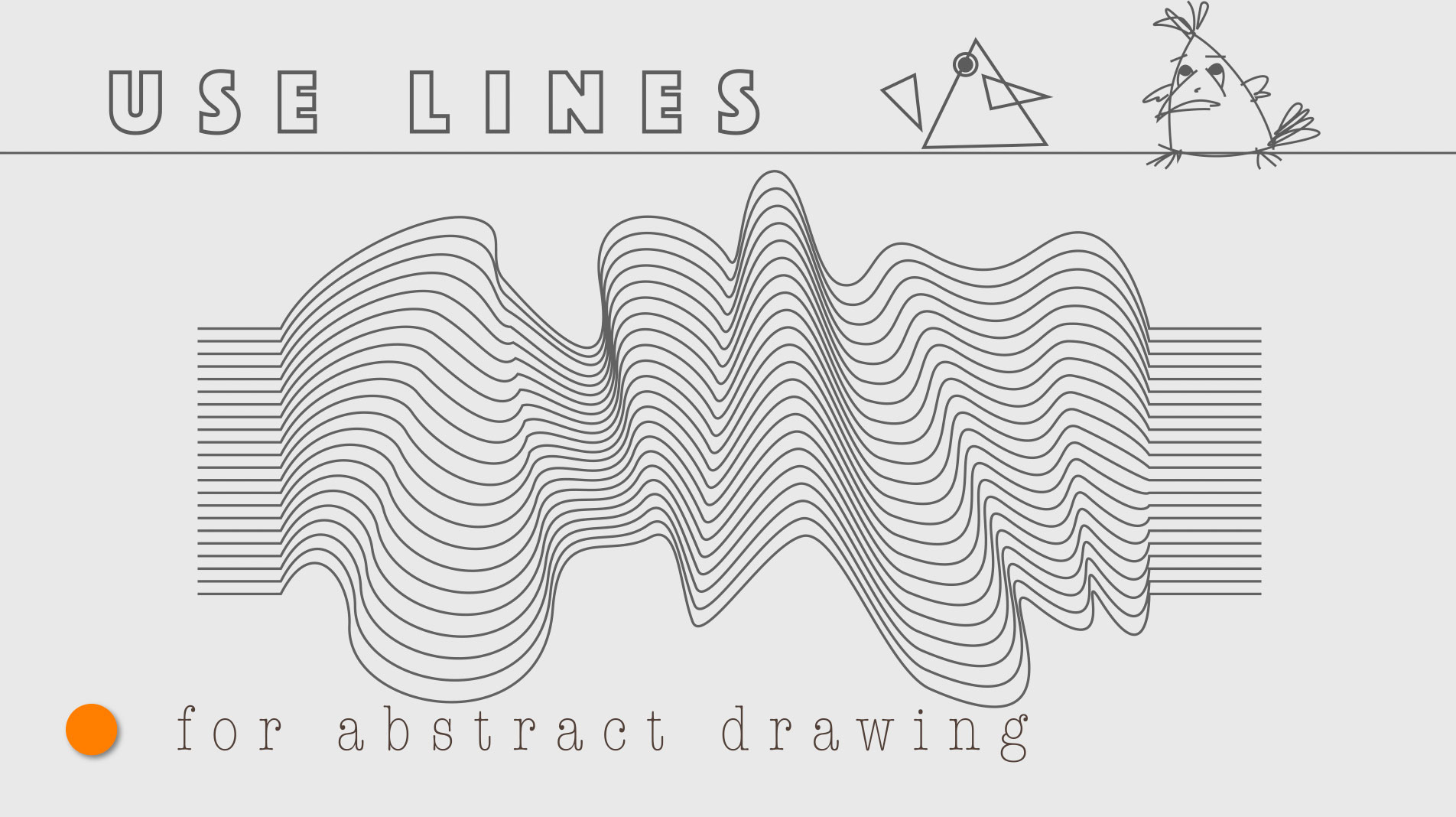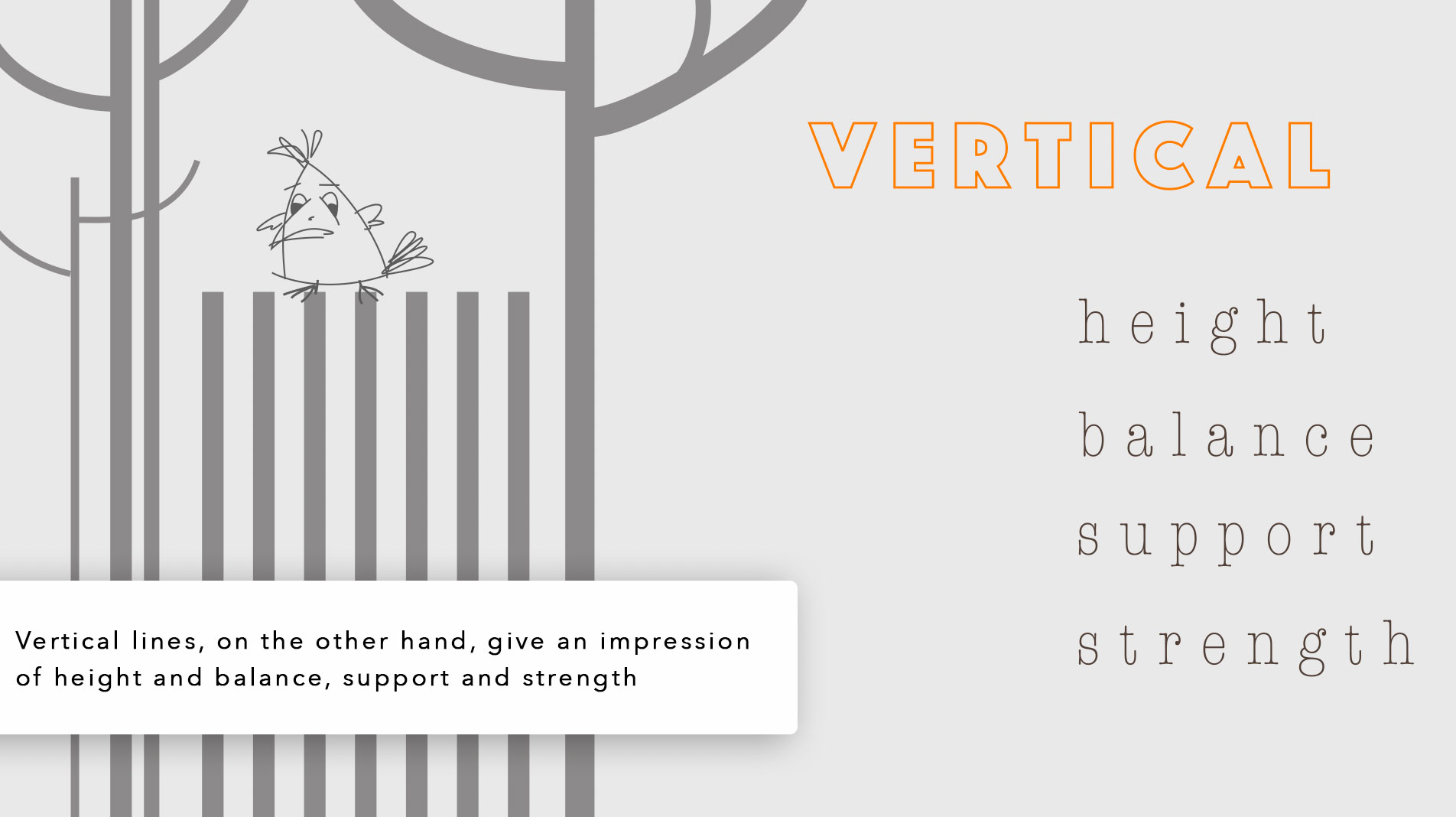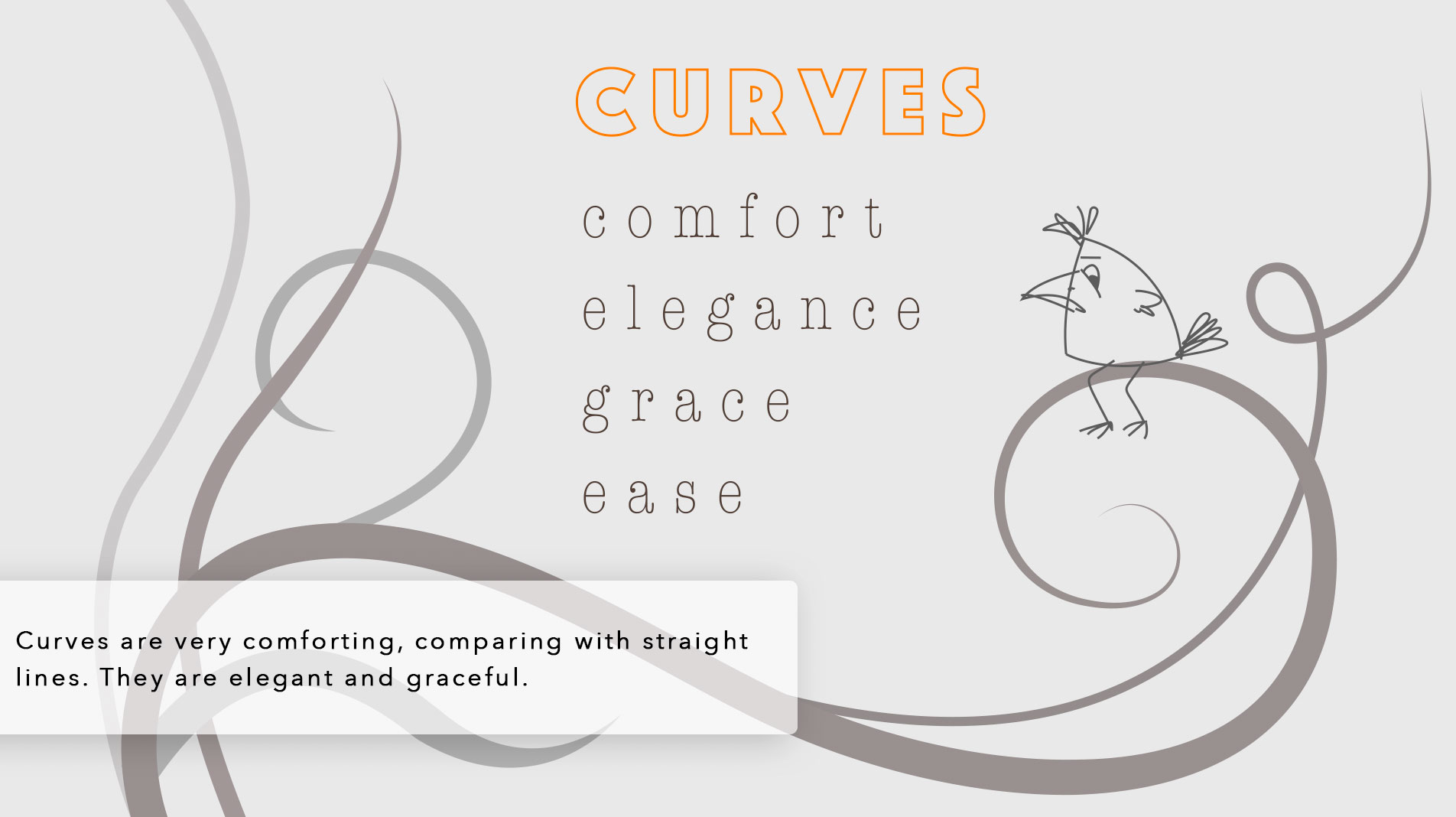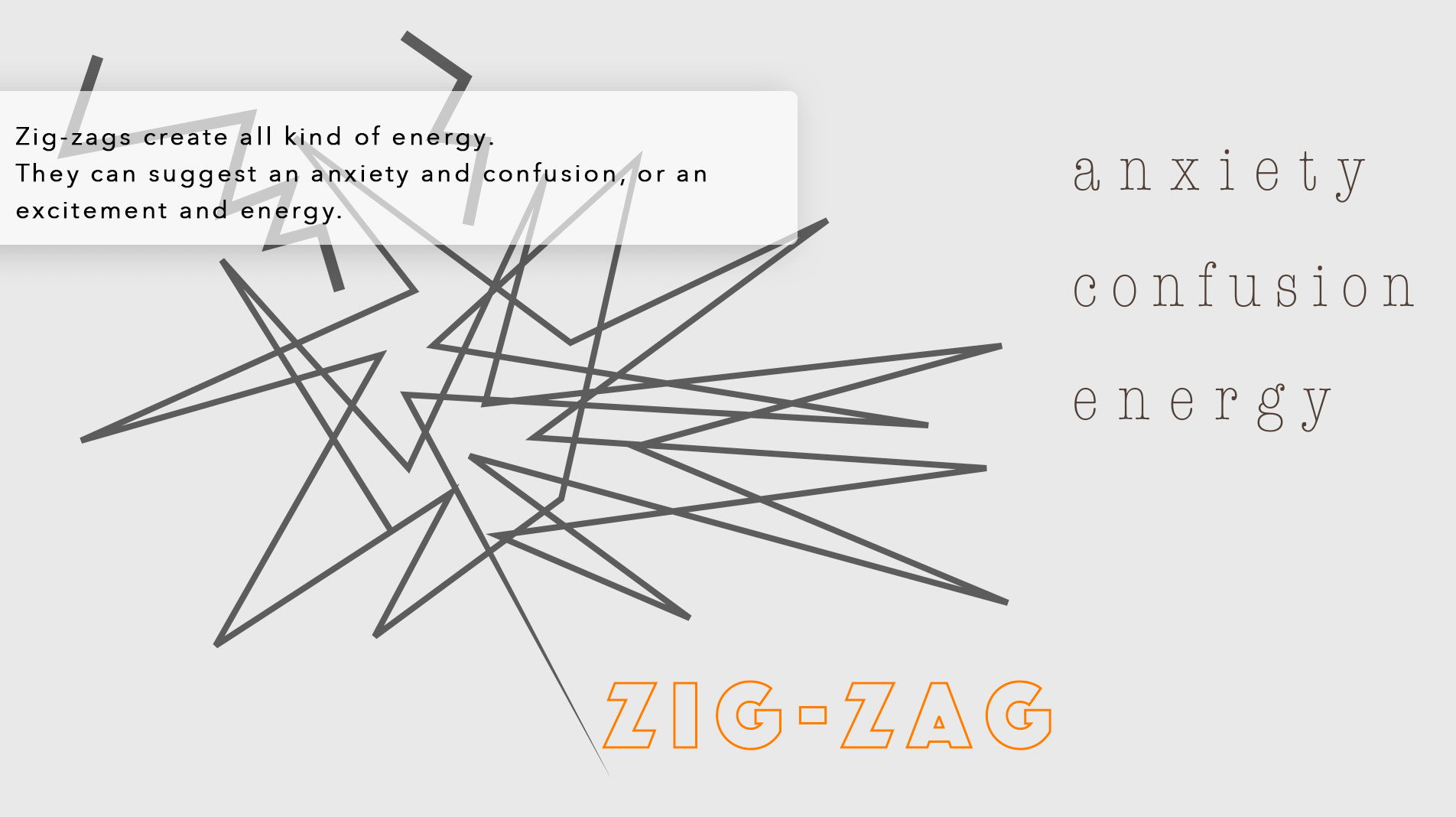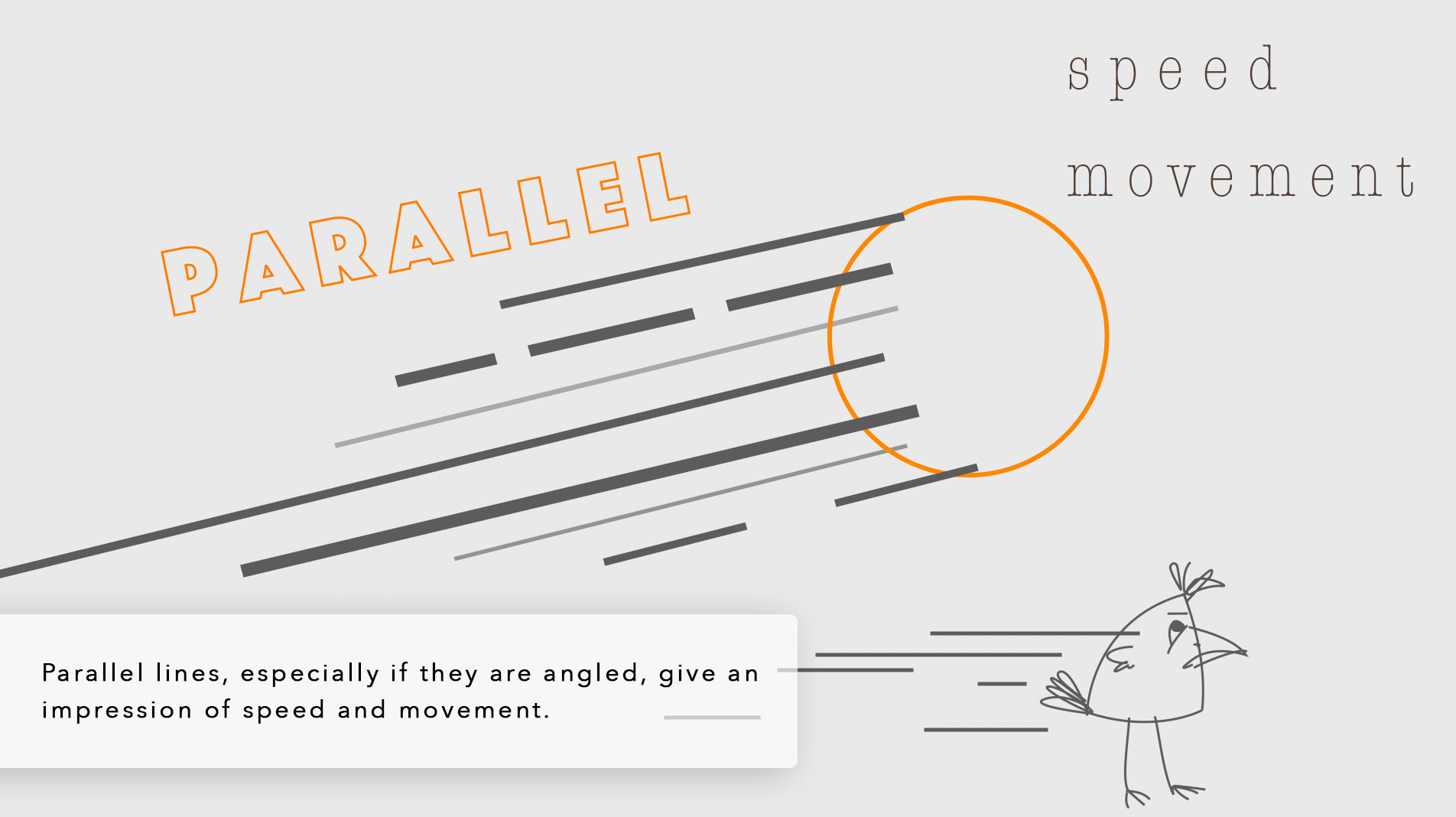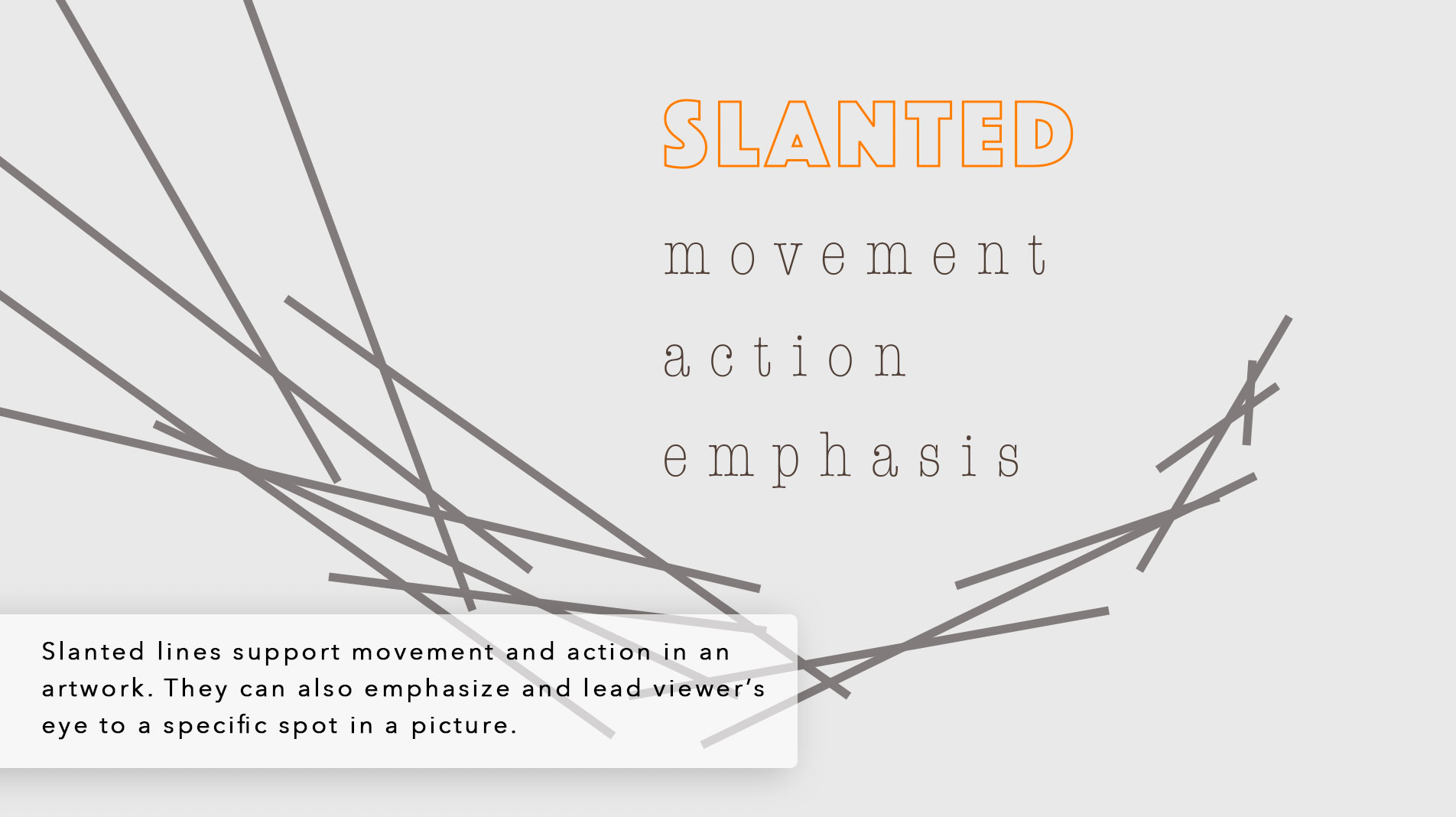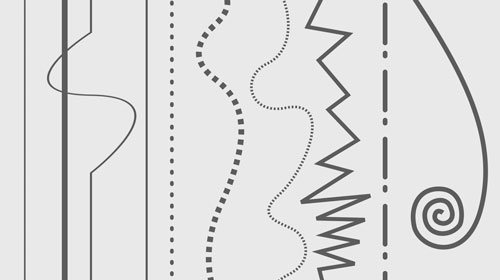by JuliannaKunstler.com
Line as an Element of Art
Types of Line
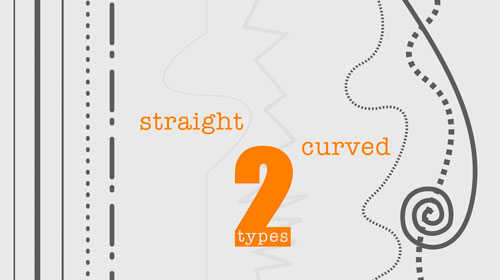
But, technically speaking, there are only two types:
straight and curved
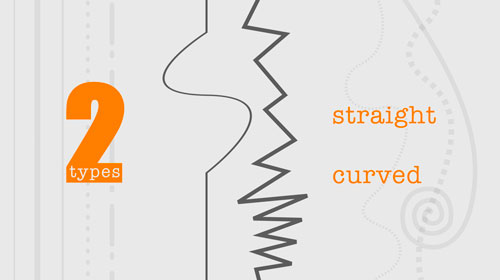
The rest of them are combinations or variations of these two types.
Styles of Line
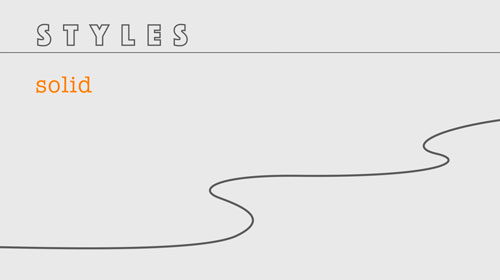
When it comes to line styles, you can group them into
4 style categories:
1. A solid, or continuous line.

2. All kinds of Interrupted or broken lines:
dashed lines, dotted lines, footprints or tire marks - they all would fit in that category.
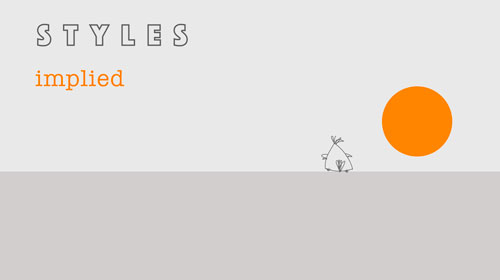
3. Implied lines are the lines you assume.
These lines are not actually drawn,
but you can see them as a border between other elements …
or a sudden change in their characteristics
A good example would be a horizon line.

4. Psychological lines are the lines that are not physically present.
You cannot see them.
They are generated by our minds based on other subjects.
If used properly, they guide viewer’s eyes and attention to where an artist wants them.
Very powerful tool.
Used in compositions and graphic design
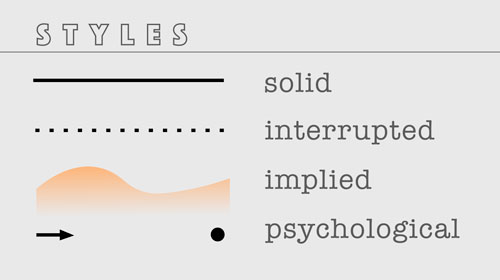
Here are the 4 styles again
Using Line
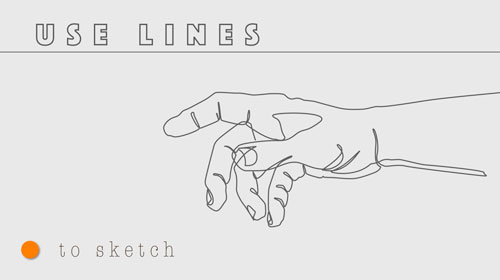
We use line in all art creations at some point or in some degree.
Here are just a few examples.
Line is used for sketching, gesture and contour drawing.
You can create an image with just one line, or make it complex and detailed.
Line can be used as the only element in an artwork.
Here are some examples of line drawings by Pablo Picasso and Edgar Degas.

Pablo Picasso
Portrait of Igor Stravinsky
1920
Picasso Museum, Paris
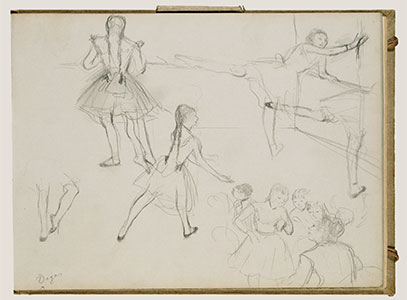
Edgar Degas
Ballet Dancers Rehearsing
about 1877
The J. Paul Getty Museum
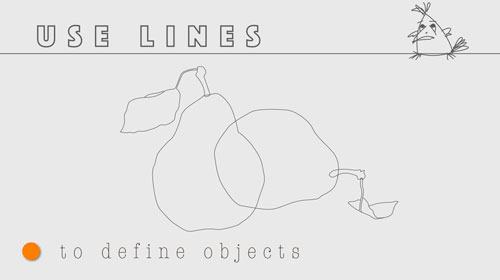
Lines define objects in space.
Use line to outline shapes or draw a composition layout before painting.
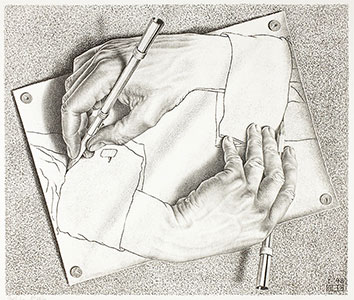
M.C. Escher
Drawing Hands
1948
Art Institute of Chicago

Georges Braque
Still Life with Apples
c. 1934
Art Institute of Chicago

Narcisse-Virgile Diaz de la Peña
Two studies for a figure composition
1820–76
Metropolitan Museum
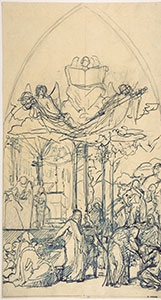
Henri Lehmann
Composition Study
19th century
Metropolitan Museum
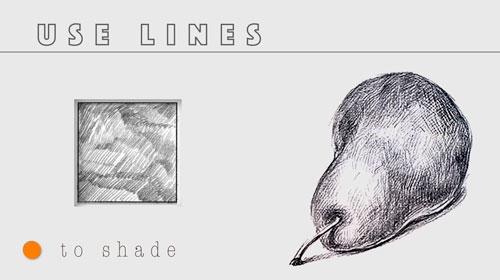
All shading techniques are based on the use of lines.
Whether straight strokes are used, or curved ones, parallel marks or cross-hatching,
They are all using some kind of line drawing.
You can use longer strokes for sketching
Or a variation of strokes to show depth, tonal value, and texture.

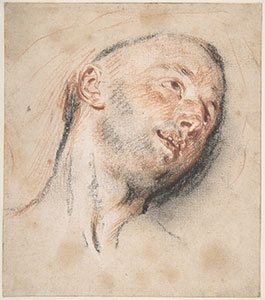
Antoine Watteau
Head of a Man
ca. 1718
Metropolitan Museum

Jean Honoré Fragonard
A Gathering at Wood's Edge
ca. 1770–73
Metropolitan Museum
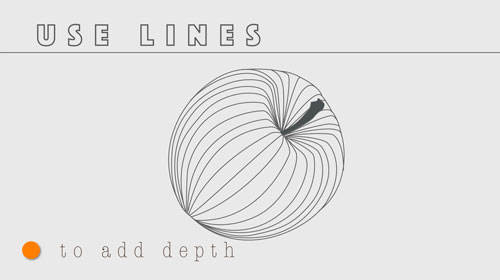
In addition to shading techniques, line can be used alone as an element to add depth in an artwork.
Manipulating a line: bending it, changing its thickness, you can achieve an illusion of 3-dimensional objects and space.
See how lines wrap around the forms to support the folds adding value and space at the same time.
… and around every facial detail in this portrait of Durer
Etchings, engravings, and other print media would be a good example of this technique.
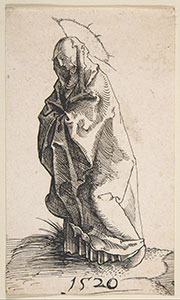
Monogrammist G.Z.
Standing Madonna in Mourning
1520
Metropolitan Museum

Attributed to Erhard Schön
Portrait of Albrecht Dürer
ca. 1538
Metropolitan Museum

Albrecht Dürer
Saint Jerome in His Study
1514
Metropolitan Museum
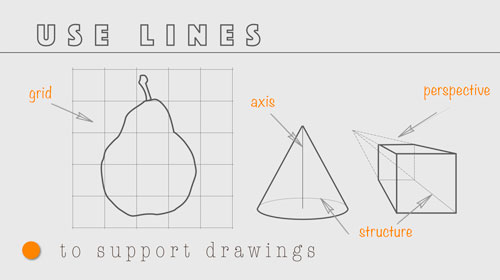
Line is your greatest support tool.
Lines assist you in:
- Drawing using the grid method
- Constructing forms and objects by using temporary structure lines
- Working with linear perspective
Grid method is a traditional way to transfer or scale images.
You go through a process of building forms using layout marks, axis lines for symmetrical shapes and surfaces, invisible or “behind” structural lines, and other supporting elements.
Receding lines are the key to building a linear perspective.
You cannot draw a realistic picture without using them.

Victor-François-Eloi Biennourry
Study of a Soldier
1851–52
Metropolitan Museum
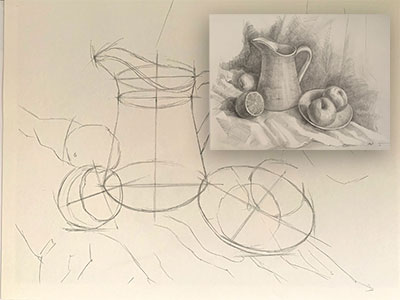
Julianna Kunstler
Study
2020
.
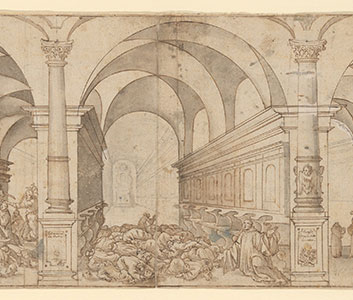
Augustin Braun
Three Scenes of the Assassination of Clerics
late 16th–mid-17th century
Metropolitan Museum

Of course we use line to decorate.
From simple and elegant patterns
to heavily embellished and complex.
Graphic designers use line in their work to decorate, lead the eye, emphasize, organize, and add structure.
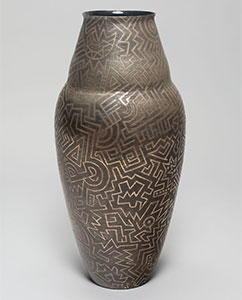
Jean Dunand
Vase
c. 1925
Art Institute of Chicago
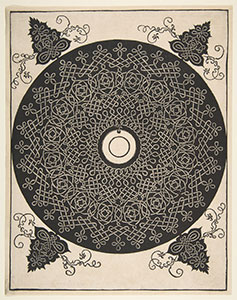
Albrecht Dürer
Embroidery Pattern
1521 before
Metropolitan Museum

Design by Day
Poster
2010
https://www.designbyday.co.uk
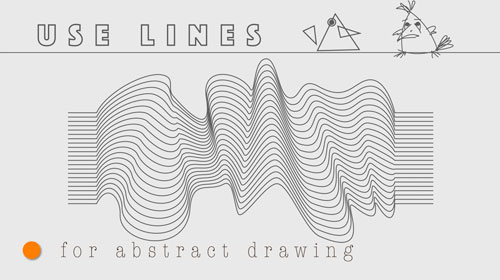
Abstract designs and drawings is another common use of line element.
OpArt is a good example.
You can probably come up with more line uses.
Think about it….

Henry Pearson
Gyros III
1965
Metropolitan Museum
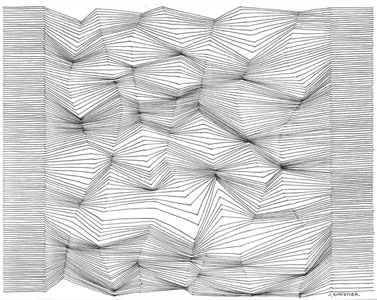
Julianna Kunstler
Design
2013
.
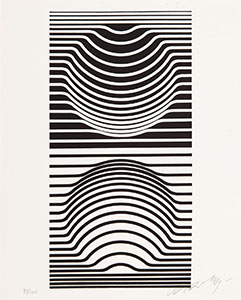
Victor Vasarely
Sir-Ris
ca. 1957
Milwaukee Art Museum
Emotional qualities of Line
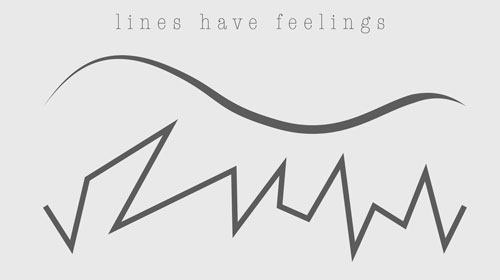
Believe it or not, but lines have feelings!
By changing the way you draw or shade, you can change the meaning and the message of your artwork.
There are certain ways our brain processes and interprets what we see.
Look for yourself.
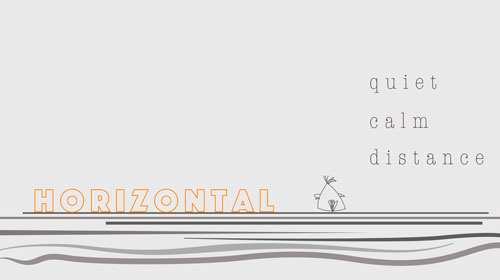
Horizontal lines are generally look quiet and calm.
They suggest some space and distance in an artwork.
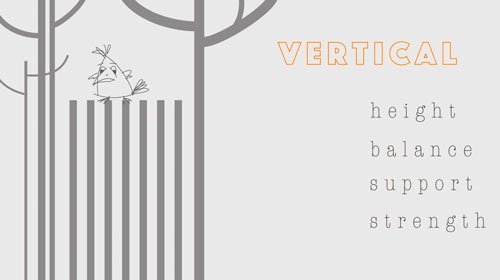
Vertical lines, on the other hand, give an impression of height and balance, support and strength.
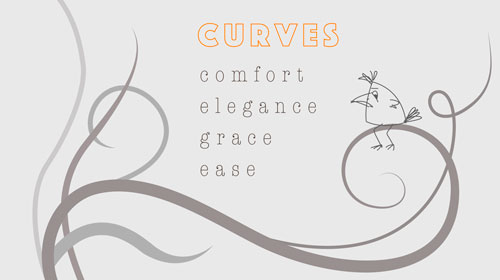
Curves are special!
They are very comforting, comparing with straight lines.
They are elegant and graceful.
So if you want to add some ease to your work - use curves.
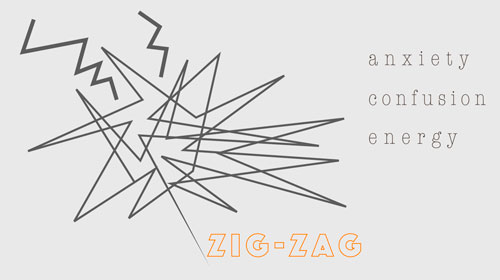
Here is a line that creates all kind of energy.
Zigzags can suggest an anxiety and confusion, or an excitement and energy.
It’s all in the context.
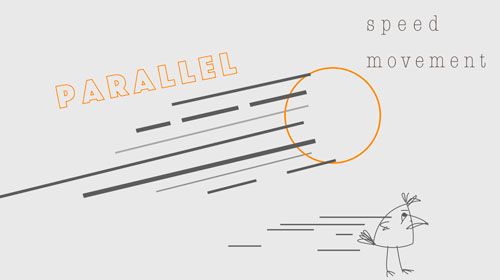
Parallel lines, especially if they are angled, give an impression of speed and movement.
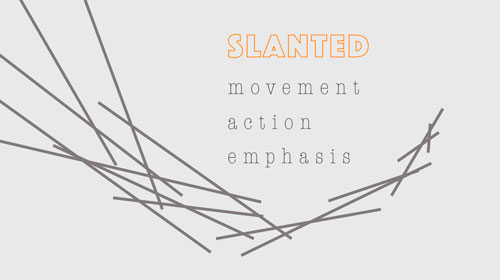
Slanted lines are also full of energy.
They support movement and action in an artwork
They can also emphasize and lead viewer’s eye to a specific spot in a picture.
Overall, the quality and characteristics of lines that you use,
contribute to the mood of your artwork.
Use lines meaningfully and responsibly :)).



